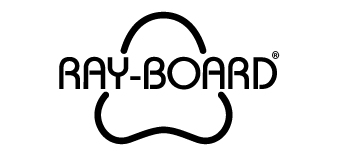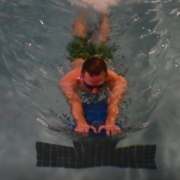How to Use a Kickboard and What You Might be Doing Wrong
You’re likely reading this article for one of two reasons. (1) You’re unfamiliar with kickboards. Maybe you saw someone using one at the local pool. Now you’re interested in learning the basics. Or (2), you’ve used a kickboard, aren’t a big fan, and are checking online to see if you’re using it correctly. Whether it’s number one or two, this article should help you learn how to use a kickboard.
Why use a Kickboard?
Kickboards are not safety flotation devices and they are not pool toys (even though it’s kind of fun to try to stand on them, or to see how high you can shoot them out of the water). Kickboards are for swim training. Using a kickboard lets you rest your arms while you keep your heart up. This can be great for swimmers who don’t have the skill or fitness to swim freestyle continuously. It’s the basic advice we learned from Dory in Finding Nemo, “Just keep swimming”.
The other reason to use a kickboard is to improve the strength and efficiency of your kick. Without your arms to help pull you through the ware, you’ll quickly figure out how much your kick is contributing to your speed. Do you drift left or right when you kick? You may have an unbalanced kick. Are your legs dead after kicking a few laps? You may need to increase your leg strength. By focusing on your kick you can see substantial improvements in your overall swimming.
How to Use a Kickboard: The Basics
Learning how to use a kickboard is straight-forward:
- Grab the kickboard near the front end
- Stretch your arms out straight in front of you
- Push off from the wall and start kicking
- As you kick, work to keep your body horizontal with your legs near the surface
- Kick evenly and with your full leg, not just your calves.
What you Might be Doing Wrong an How to Fix It
Two common complaints from kickboards user are (1) “This is so uncomfortable! I have to stop” and (2) “I’m kicking hard but not going anywhere!”. Here are a few suggestions on how to use a kickboard correctly:
- Using a kickboard can be painful, particularly through your neck and back. Try to minimize any arching of your back or neck. Unfortunately this can be difficult if you’re working to to keep your feet near the surface and also need to keep your head out of the water. You may need to stop periodically to stretch.
- Similarly, kicking with your arms fully extended can lead to shoulder pain. It’s good technique to maintain fully extended arms while your in a streamline coming off a turn, but that only lasts for a few seconds. That’s not a position that you should hold lap after lap. To reduce this discomfort, hold the kickboard with slightly bent arms.
- If you’re getting nowhere fast with your kick, make sure you kick with your full leg. Your kick should initiate at your hip, not your knee. New swimmers often bend their knees way to much when kicking, sometimes moving like they are pedaling a bike. Have someone watch your kick from underwater to tell you what they see. Or better yet, have them film your kick.
- Be aware of the Goldilocks rule regarding leg position. Too high or too low in the water you’re going to have problems. If your entire lower leg is out of the water during each stroke you’re wasting energy pushing on air. If they are too deep your body position will be at an angle that increase drag and slows you down. It’s important to maintain a flat position, just below the water’s surface.



How Ray-Board™ can Help
Some of the challenges with kickboards aren’t easily overcome, in part because most kickboards are poorly designed. They are designed to be easy to manufacture and inexpensive to ship. They are not designed to help you kick better and more comfortably.
The exception is Ray-Board™, a kickboard that is very different from the flat kickboards you’re likely seen at your local pool. It was developed by a swimmer who knew there had to be a better solution. Ray-Board’s shape puts your arms in a bend position, which takes stress off neck, shoulders and back, allowing you to swim more comfortably. It also drops your elbows below the surface, allowing you to easily maintain a horizontal swim position. If you’re looking for a kickboard that you can use comfortably lap after lap, you need to try Ray-Board.



